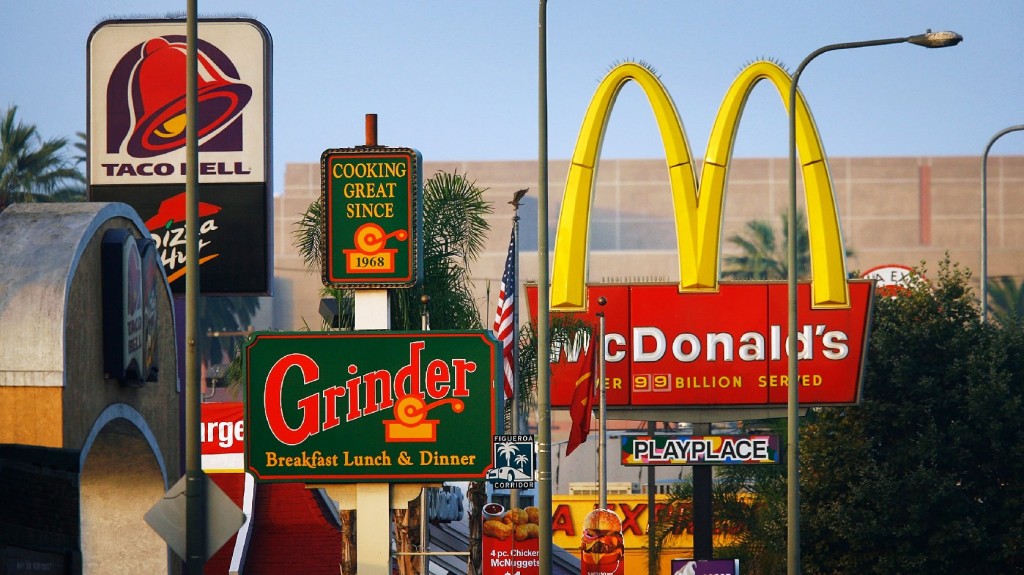The researchers surveyed nearly 5,500 adults who live in Cambridgeshire County, England, about their eating habits. They also looked at the number of fast-food and takeout joints around the participants' homes, commuting routes and workplaces. The results appear in the British Medical Journal.
While the findings suggest an association between people's food environments and their chances of being overweight, they don't prove that one directly causes the other. But, Burgoine tells The Salt, the research does suggest that policies restricting the number of fast-food joints in a neighborhood might be on the right track.
For example, since 2008, Los Angeles has had a moratorium on the opening of new fast-food outlets in South LA, a neighborhood that suffers from alarmingly high rates of poverty and obesity.
Burgoine says that the number of fast-food restaurants in many neighborhoods, both in the U.S. and the U.K., have skyrocketed over the past few years.
"As I was doing the research, I really got to thinking about my food exposure and my travel from where I live on one side of Cambridge to the other," says Burgoine, whose research focuses on the interaction between obesity and environment.
And the dining options around our workplaces can be especially significant, Burgoine says. A quick burger or takeout is especially appealing to people rushing to feed themselves during a limited lunch break. The study found that, on average, people were exposed to 48 percent more fast food at work than at home.
Of course, access to fast food is only one reason that people might reach for unhealthy foods. Studies have shown that everything from people's income and upbringing to the layout of their local supermarket can affect their choices.
But the researchers found that the risk of obesity increased with the density of fast-food joints, even after controlling for demographic factors like age, income and education, and the amount of calories that participants burned through physical activity.
Still, this study doesn't show whether limiting the number of fast-food restaurants in a neighborhood will affect people's risk of obesity in the long term. It also doesn't look at whether the availability of healthier choices played a role.
"Changing the food environment, even with evidence like this, isn't likely to be the answer by itself," Burgoine says. "But it might be one part of a wider solution."
Copyright 2014 NPR.
